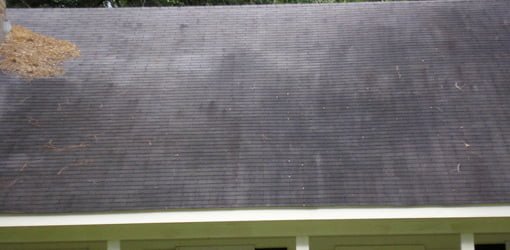 Which Roof Coating Performs Best?
Which Roof Coating Performs Best?
If you believe you'll be saving the roof decking plywood (not replacing it), then you might save yourself some clean-up difficulty by eliminating the components initially and after that peeling up the rubber! Information of water damage on camper roofing system. More water harmed locations on Recreational Vehicle roofing system decking. There was absolutely nothing truly awful that made me feel like I was going to fail, however definitely a great deal of damage and I was getting the sensation I would be changing a great deal of the roofing system decking plywood.
 10-year Premium White Elastomeric Roof Coating
10-year Premium White Elastomeric Roof Coating
My Company: DC Roofing in Tucson http://archergvog056.timeforchangecounselling.com/elastomeric-reflective-roof-coating
I chose the most basic one first, a vent cap from a cooking area sink pipes vent pipeline. Beginning to scrape caulk and sealant. I utilized a stiff scraper with a chisel-like blade and simply began prying and cracking and scraping and hacking. There is no other way around this, you simply have to begin digging till you expose the screw heads.
Unscrewing the screws in vent cap. The screws on this vent cap were hex-head metal screws so I utilized a little socket driver to remove them. Some came out clean. Others were rusted and I needed to use a vice-grip pliers to get the heads and turn them gradually.
I discovered an old wasp nest inside the vent cover. This is a sight I'll probably have to get utilized to, discovering the remains of animal habitation in every nook and cranny. I invest a dreadful great deal of my time producing excellent wildlife environment in my yard so I don't get offended when a creature chooses to set up home in my Recreational Vehicle.
Roof Sealants & Coating At Ace Hardware
Fortunately no one was home in this old nest so I simply tossed it. Possibly I'll put a screen over it when replacing it. Which brings us to the next point. You must try not to damage these pieces (like vent covers and caps) as you're removing the old caulk and sealant just in case you require to use them once again.
(Think I'll find out when the roofing is done!) Prying up the vent cap and removing the last ring of rubber roofing below. So I pried up the rest of the cap and scraped up the remaining rubber roof and butyl tape and putty and 25 years of other gunk and here's how it looks tidied up.
 Uniflex Acrylic Elastomeric Coating Spec For Metal Roofs
Uniflex Acrylic Elastomeric Coating Spec For Metal Roofs
One down, 7 more components to go. Next I chose to deal with the only roofing ventilation fan that my camper has. My roof vent likewise had a vent cover over it. So I began scraping the gunk from those screws. Starting on the roofing vent. Hardware exposed on roof vent cap, the first nut came off tidy.
 Pro-q 7-year White Elastomeric Roof Coating
Pro-q 7-year White Elastomeric Roof Coating
Bolt is spinning. The fasteners on this Recreational Vehicle roofing vent cover were nuts on small bolts. The very first one came off fine with an extension socket kit. The second one simply started spinning, indicating the bolt was not fixed in place however turning along with the nut. Bummer. A peek at the hardware holding down the roofing system vent cover.
Myths, Facts, And The Truth About Silicone And Elastomeric Roof Coatings
I didn't have any great way to hold the bolt in location so instead I chose to saw through the bolts with a reciprocating saw. Sawing through bolts on roofing system vent cover. I utilized a cordless reciprocating saw with a metal-cutting blade but it was challenging to get the blade flat enough to reach the bolts so near to the roof deck. Many were so old and rusted that they sheared off when I loosened then with a great deal of force. Loosening the brackets that held the vent cover in place. Then I scraped more caulk and roofing system sealant off the flange of the roof vent itself. I quickly discovered there disappeared screws or hardware holding it down so I provided up on the scraping and went inside the RV After scraping the caulk and sealant from flange of roofing vent, say goodbye to screws! Unscrewing the inside cover plate of roofing system vent fan in RV restroom.
A couple sheared off with a great deal of force, but 2 would not budge. So I needed to drill out the screw heads. I chose a drill bit near the size of the shaft of the screws that I had currently taken out and began drilling. Selecting a drill bit for drilling out a screw head.
Security glasses advised. So I drilled out the heads, one popped off and the other I was getting frustrated with and gave it a pull prior to it was drilled through. Rather of popping off the screw head, the plastic just melted away around the hot screw head. Whoops. Hope I don't have to recycle this cover.
If not, I'll need wider screw heads when re-assembling. Cover plate eliminated from roofing vent. Next I discovered little corner brackets with hex-head bolts holding them in. I unscrewed them (all came out great the good news is) and took out the brackets and little white plastic spacers. Loosening corner brackets in roofing vent.
Karnak Coatings Surecoat-elastomeric-roof-coating
All corner brackets got rid of, ready to take out. As soon as the brackets were out I went back up leading to pry out the the roofing vent. Then I scraped up all the remaining gunk and rubber roofing. Taking off the old roofing system vent. There are 2 wires running to the roofing system vent (a black hot wire and a white neutral wire) that you'll need to clip to eliminate the old vent.